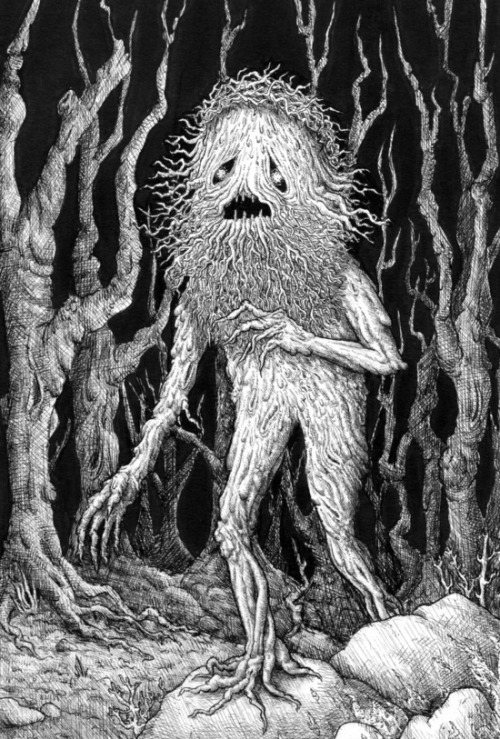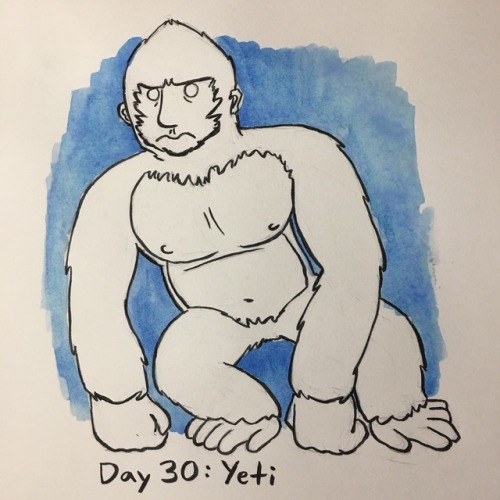#legendary creatures
Slavic mythology from Poland [part 5/?] » LATAWCE / LATAWICE
On the picture: artwork by karoja-j.deviantart.com.
Latawce [pronounced la-tav-tse] and their female counterparts latawice [la-ta-vee-tse] were demons believed to be souls of the aborted or stillborn children, but also of people who died suddenly (for example hanged criminals). Originally, they weren’t seen as particularly hostile to people, though could be dangerous due to their restless nature, identified with the unpredictable forces of the wind.
Their appearance was resembling birds, particularly black ones like ravens or rooks. We could interpret that they were shapeshifting in nature, because many tales describe them with human parts (for example face or legs), or even looking like regular people, only with e.g. wings instead of arms. They were mostly night creatures, often arriving with winds, whirls, and storms. People also believed that latawce could die when hit by a lightning.
If bribed with the right offerings, spells and prayers, they could’ve become home spirits and help around the household, for example to guide moderate winds to the windmills. But an offended latawiec could become vicious - in some regions of Poland it was even believed that the fires started by lightnings were caused by these demons, and that they were seducing young people with their irresistible form of appearane, whispering in the winds and eventually driving their victims insane.
Due to the influence of Christianity in Poland, this folk belief was changing over the centuries: for example the origin myth of their creation started including also the unbaptized children. Restless nature of latawce was demonized, compared to devils, and overly sexualized. Still in early 20th century girls were warned not to go out alone on windy or stormy nights, because a latawiec could lure them and force to commit a “sin of impurity”. Over the time, the female verb latawica became even a popular synonym for a promiscuous woman in the Polish language.
The word latawiec in the modern Polish language means also a kite. They are derived from the verb latać meaning to fly.
My general list of sources / book recommendations [in Polish only].
Check also: błędne ogniki,płanetnicy,zmory,boginki.
Post link
C R E A U T U R E S O F S L A V I C M Y T H O L O G Y;
wilkołak; vlkodlak; vilkolakis; оборотень; volkcxlovek;
lycanthropy is the result of a curse, repeat like an echo of medieval legend. It is often the punishment for infidelity of his wife. To the list of reasons can be added charm and magic, the latter attributed the up warlocks, and sorcerers.The transformation can take place also at his own request, just cross running water. Werewolf can also be child conceived on a day of sexual abstinence, especially on the Christmas Eve, Easter and Pentecost. Also had a good chance of a seventh son during baptism could harm a child, even the thought of werewolves. Criminals, sinners and heretics also waited wolf fate.
Post link
TheLeshyorLesovikis a male woodland spirit in Slavic mythology who protects wild animals and forests. There are also leshachikha/leszachka (wives of the leshak) and leshonky (children of the leszy). He is roughly analogous to the Woodwose of Western Europe and the Basajaun of the Basque Country.
A leshy usually appears as a tall man, but he is able to change his size from that of a blade of grass to a very tall tree. He has hair and a beard made from grass and vines, and is sometimes depicted with a tail, hooves, and horns. He has pale white skin that contrasts with his bright green eyes. A leshy has a close bond with the gray wolf, and is often seen in the company of bears as well. He is the forest lord and carries a club to express that he is the master of the wood. He has blue blood, which makes his cheeks the color blue. Legend describes him as having a red scarf and his left shoe on his right foot. He also has no shadow.
Leshy protects the animals and birds in the forest and tells them when to migrate. He can shapeshift into many different forms. As a human, he looks like a peasant with glowing eyes, and his shoes are on backwards.
A person who befriends a leshy can learn the secrets of magic. Farmers and shepherds would make pacts with the leshy to protect their crops and sheep. The leshy has many tricks, including leading peasants astray, making them sick, or tickling them to death. They are also known to hide the axes of woodcutters. A person gets lost in the woods when a leshy crosses their path. To find the way out, you have to turn your clothes inside out and wear shoes on opposite feet.
Leshies are terribly mischievous beings: they have horrible cries, and can imitate voices of people familiar to wanderers and lure them back to their caves, where the leshies will tickle them to death; they also remove signs from their posts. Leshies aren’t evil, although they enjoy misguiding humans and kidnapping young women, they are also known to keep grazing cattle from wandering too far into the forests and getting lost. Sometimes cow herders will make pacts with a leshy by handing him their crosses from around their necks and sharing communion with him after Christian church gatherings; these pacts are said to give the cowherds special powers.
Sometimes more than one leshy inhabits a forest, and then they will fight for their territory, knocking down trees and scaring animals.
(Artwork: Lescovik by Slaggs)
Post link
mythology meme | Slavic legendary creatures - Firebird
The Firebird is described as a large bird with majestic plumage that glows brightly emitting red, orange, and yellow light, like a bonfire that is just past the turbulent flame. The feathers do not cease glowing if removed, and one feather can light a large room if not concealed.
Post link

![lamus-dworski:Slavic mythology from Poland [part 5/?] » LATAWCE / LATAWICEOn the picture: artw lamus-dworski:Slavic mythology from Poland [part 5/?] » LATAWCE / LATAWICEOn the picture: artw](https://64.media.tumblr.com/557231e6e0634523a5877ae3adafd628/tumblr_nutveljmgD1tzeqovo1_500.jpg)



